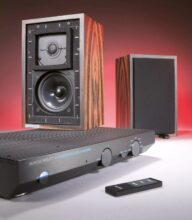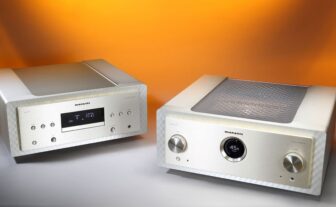Copland CTA407 Integrated Amplifier Review
A humorous twist on a Schlager wisdom from the seventies says: Danes don’t lie. The design and build of the Copland CTA407 from Copenhagen promise honest, unadulterated tube sound. Let’s take a listen.
Before any Schlager fans get upset: The author knows that Lothar Bernhard Walter, under his stage name Michael Holm, wrote “Tears Don’t Lie” half a century ago. The singer adapted the text to the instrumental “Soleado” by the Italian Daniel Sentacruz Ensemble and created one of the biggest German hits of 1974/75. The title quickly made its way through humorous circles as “Danes Don’t Lie.” The Danish speaker company Dynaudio later turned this into a promotional slogan.
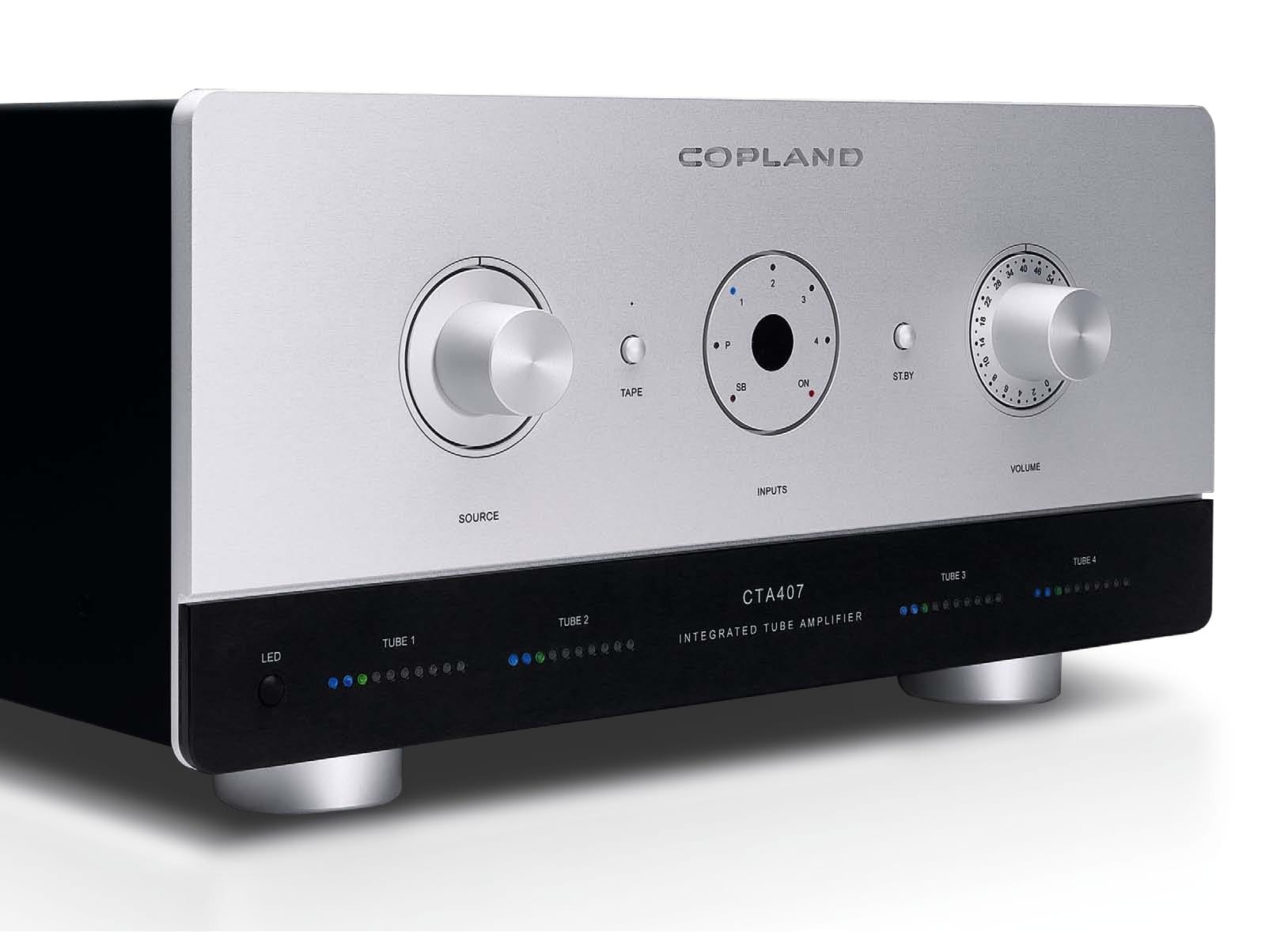
Their fellow Danes at Copland never officially adopted this slogan. However, the amplifier specialists made it no secret that their tube amps aim for pure and unaltered sound reproduction, a goal still evident in the current CTA407. Copland founder and chief designer Ole Møller highlights this ambition with the minimalist and straightforward design.
The characteristic two knobs on the front—left for source selection, right for volume control—carry a slight nostalgic hint of the legendary Cello Audio Suite preamp. The CTA407 boasts a long lineage within the company founded in Copenhagen in 1984, starting with the almost legendary CTA 401 tube amplifier from 1990. Unlike the successor CTA 408 tested, the brushed aluminum front of the 407 is fully enclosed—a practical improvement over the somewhat crude vents of its predecessor. Its direct predecessor, the CTA 405, was in production from 2005 to 2019.
Upgrade Options
Technically, the 407 is a classic tube integrated amplifier featuring two push-pull power pentodes or beam tetrodes per channel. A brief lesson in tube technology: The simplest tube type, the diode, has two electrodes: a heated cathode and an anode. Applying a voltage allows current to flow from cathode to anode. A triode adds a control grid as a third electrode, allowing current regulation through the grid voltage. In high fidelity, double triodes like the ECC83 (or 12AX7) used in the input stage and the ECC82 (12AU7) used in the driver stages of the CTA407 are common.
A tetrode adds a screen grid between the control grid and the anode, enabling higher amplification than triodes. Issues with secondary electrons are mitigated in pentodes by a fifth electrode called the suppressor grid. Beam-power tetrodes, like the 6L6 or KT88 used in the Copland CTA407, utilize bent electron beam plates instead of suppressor grids.

In the base configuration, customers can choose between four 6550 or KT88 tubes. Copland also offers seamless upgrades to compatible KT90, KT100, KT120, and KT150 tubes, enabled by an automatic bias adjustment system.
The automatic bias adjustment ensures optimal operating conditions for the power tubes.
Each of the four power tubes has its own bias circuit to monitor and optimize the idle current, sparing users from manual recalibration.
The review unit was equipped with four KT88C tubes from the Chinese manufacturer Psvane, providing a reliable 43 watts per channel at 4 ohms in push-pull mode. The transformers offer outputs for 4- and 8-ohm loads, but the 4-ohm connection is generally recommended.
Output transformers play a critical role in sound quality, transforming high tube amplifier voltages into the currents needed for conventional speakers. They also handle phase alignment in push-pull circuits, which the CTA407 executes with precision.
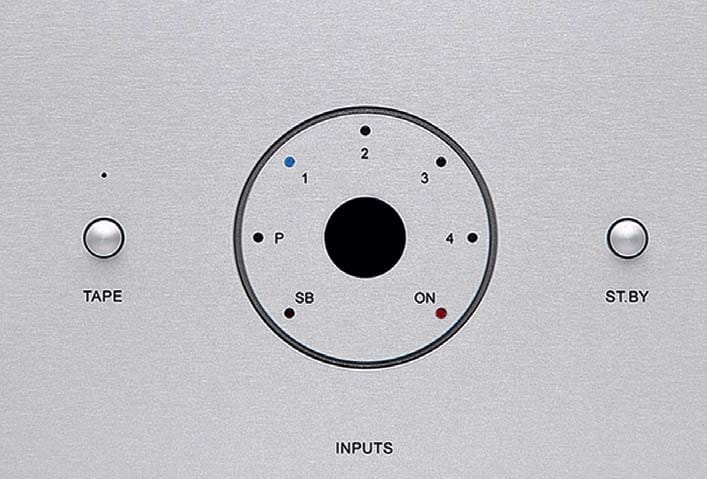
Composition and Design
In push-pull configurations, tubes amplify both positive and negative halves of a signal. Unlike transistors, tubes cannot operate with negative voltages, so they must be driven by out-of-phase signals of equal amplitude. The CTA407 achieves this with the ECC82 dual triodes.
The transformers combine these amplified signals, ensuring seamless integration. The CTA407 uses toroidal cores, differing from previous models, for its output transformers.
The design delivers low noise, low distortion, and excellent linearity, extending to the built-in moving magnet (MM) phono stage. This stage employs discrete components rather than integrated circuits, underscoring Copland’s dedication to quality analog performance.
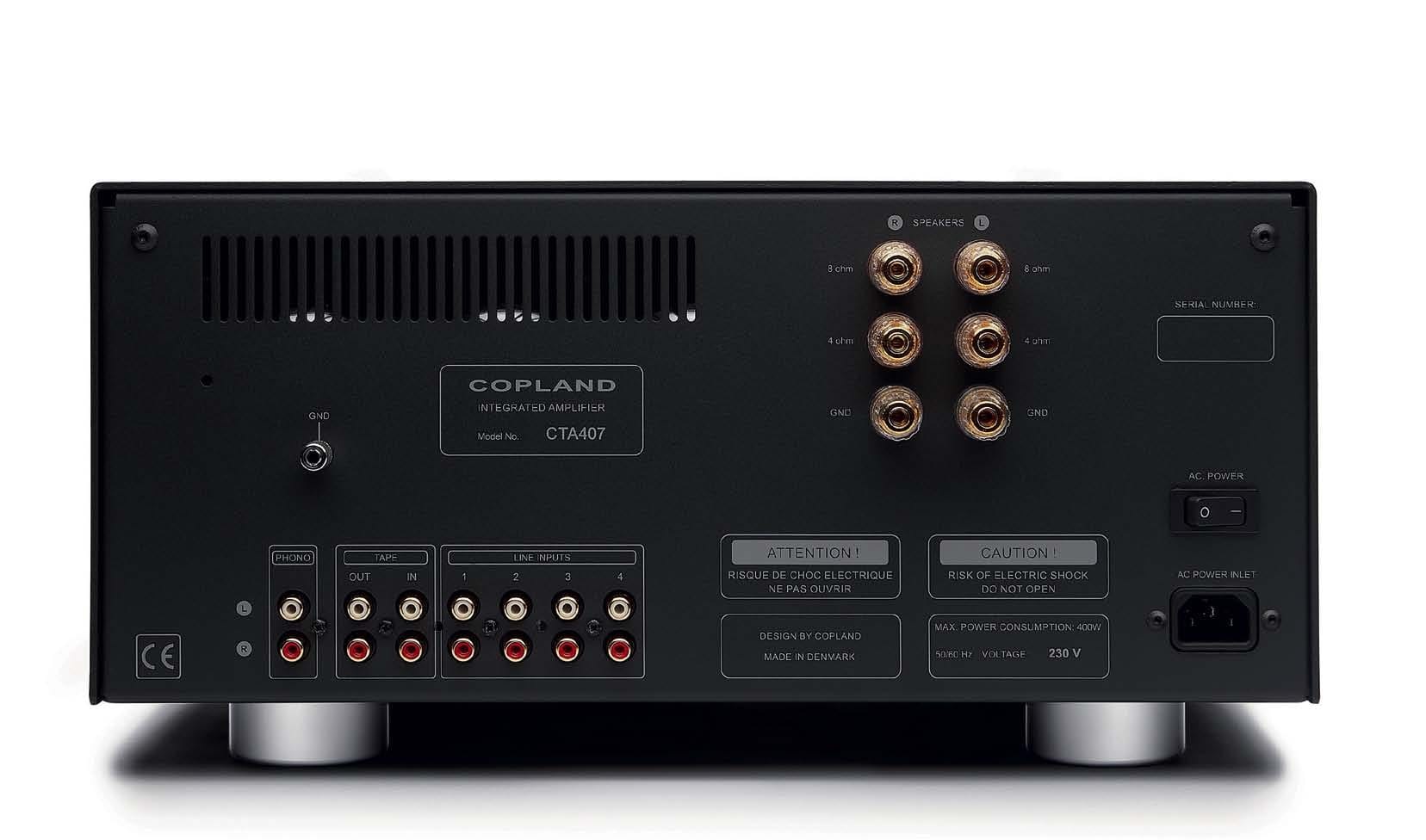
Lightshow Feature
The CTA407 introduces a visual innovation: four LED arrays beneath the unit that indicate tube status. The first three LEDs (blue and green) signal normal operation, while orange LEDs act as performance meters. If desired, the light show can be turned off entirely.
During tests with B&W 802 D3 speakers, the amplifier performed flawlessly, delivering ample power and maintaining composure even under demanding loads.
Exceptional Performance
At moderate listening levels, the Copland CTA407 displayed extraordinary clarity and balance, with a dynamic yet natural soundstage. The phono stage complemented vinyl playback beautifully, bringing out the best in recordings like Ian Anderson’s “Divinities.”
From Mozart’s Requiem to Bad Company’s “Wild Fire Woman,” the CTA407 impressed with its precision and musicality.
Copland CTA407 Performance Measured

Straight frequency response from 20 Hz to 20 kHz, mild drop-off beyond, and a moderate voltage drop of 1.6 dB under varying loads (4- and 8-ohm taps). Quiet operation with 102/80 dB (line/phono). Typical tube harmonic profile with 0.5% distortion at half power. Sinusoidal output power: 32 W/8 ohms, 46 W/4 ohms. Power consumption: 0.4 W standby, 150-260 W in operation. Maximum surface temperature: 120°F.
AUDIO score: 9.6/10
Specs
Technical Data:
- Model: Copland CTA 407
- Price: €6900 → $7,400 (converted to approximate USD)
- Warranty: 2 years
- Dimensions (W × H × D): 43.5 × 21.5 × 42.0 cm
- Weight: 20.0 kg
Connections:
- Phono MM/MC: MM supported / MC not supported
- High-level Inputs (Cinch/XLR): 5 (including Tape In) / no XLR
- Digital Input: None
- Tape Output: Yes
- Output (Cinch/XLR/Adjustable): None
- Headphones: None
Features:
- Adjustable MC Impedance: No
- Adjustable MM Capacity: No
- Remote Control: Yes
- Special Features: Auto Bias for socket-compatible tubes
CONCLUSION:
The Copland CTA407 is a superbly engineered tube amplifier, delivering neutral yet engaging sound. It neither overemphasizes nor softens the music, staying true to the recording. This Dane indeed does not lie.
Pros & Cons:
Pros:
- Neutral, disciplined sound.
- Rich and nuanced tonal character.
- Well-performing Phono-MM stage.
Cons:
- Volume control is a bit coarse at low levels.
- No XLR connections.
Test Results (10-point scale conversion):
- Sound Quality (High-level/Phono-MM): 9.7 / 9.4
- Features: 8.0
- Operation/Usability: 9.0
- Build Quality: 9.0
Audio Benchmark:
- Overall Score: 9.7 / 10
- Price-to-Performance: High-end, exceptional.




